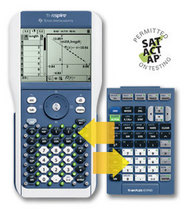 This is more like a meta-review. I have gone to Canada Computes where nearly the entire Behringer line is sold, and was impressed by the specs. But does it do what I want, the way I want it?
This is more like a meta-review. I have gone to Canada Computes where nearly the entire Behringer line is sold, and was impressed by the specs. But does it do what I want, the way I want it?
I face a number of obstacles, being a fuddy-duddy former college DJ. For one thing many of the commonplace terms have changed, obfuscating what I think they’re saying, versus the actual intent when I purchase the stuff and find out for myself. It’s a Wittgenstein thing. Sussing out the exigetical intent of the interface, even as explained by the user manual available online, is an essay in near-futility only to be appreciated by interpreters of ancient Hebrew texts or Egyptian hieroglyphs. That is, knowing the words on the labels and diagrams isn’t enough: what is the meaning?
Watching the audio reviewers on You Tube try and tackle this interface (and there were a surprising number of them, and we’re only talking about this particular product, the Xenyx 502, made by Behringer) revealed a litany of awkward hesitations and skipping of knobs and jacks they knew nothing about. This was even true of the professional reviews. The YouTube review on the Behringer site, done by a kid who looks and acts not a day older than 15, is an embarassment and should be taken down. The only good parts occured when he was reading from the manual.
Indeed, what do they mean? And I am going beyond the obvious: no-one needs to tell me about the function of the phone pot or the main mix pot; I think I can figure out the RCA ins and outs on the middle right of the unit; nor about the LED level meter; nor about the balance or panorama (Pan) settings. I also managed to figure out that the PA-system style mike connectors are called XLR connectors. That’s that 3-pin jack on the top lefto corner of the photo. Then there are 8 of what used to be called “quarter-inch jacks” across the top of the unit, but are today called TRS jacks (for tip/ring/sleeve). Fair enough.
But what puzzles me to no end is the TRS jack just below the XLR jack. This is where the exegiesis comes in, and all that Wittgenstein stuff. And the reason it drives me crazy is because, really, I don’t have XLR plugs on my microphones. Instead, I have a pair of mikes with TRS plugs. These plugs are the most common in existence. We even used quarter-inch plugs when I worked as a college DJ. XLRs were something you hooked up to a PA system at your local school. XLRs often suffered from not being sealed all that well, resulting in a low-frequency electronic “buzz” that would have made them unsuitable for recording.
On one of the You Tube demos, a guy on the video (HobbitAssassin08) says that the “Line In” for Channel 1 (that is the TRS jack in question) can be used with TRS-style mikes with their own battery (and therefore have no need for the “phantom power” feature that Behrninger brags about). This is almost perfect. However, my mikes (TRS in my case probably means Tandy/Radio Shack, with the requisite quarter inch mono jacks) have no power of their own. They are basic professional mikes with a magnet and a diaphragm, which produces the current and the signal for my voice. It needs an amp or a recorder to process the signal. The specs say the mixer jack has a minimum of 10,000 ohms impedance. My mike is rated at 500 ohms (30% tolerance — depends on the frequency).
The power supply is proprietary. Also, channel 1 only works with line or mike inputs but not both. The other four channels are part of two stereo channels. If you plug a source into the left channel only, you get mono. 5 channels in, 3 out: the three are for two separate stereo outputs and one headphone output. The whole mixer board is slightly larger than your hand.
Will I buy it? That’s the question that has been driving me batty this past week. Looks like this mixer board is not compatable with my existing mics, and that I will have to purchase yet another mike or a pair of them if I am to buy this one. Looks like I will have to look elsewhere for a mixer board.
Visits: 153

